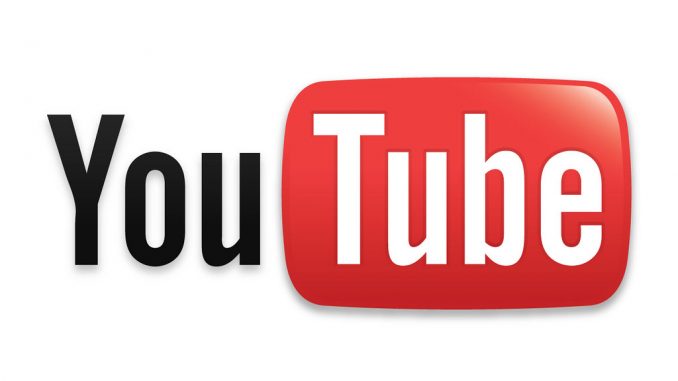Are you… Bored? Lonely? Inspired? YouTube is the place for you! Do you want to… Learn? YouTube may not be the place for you…

WHAT IS IT?
With over 1.3 billion accounts set up and over 5 billion videos watched on a daily basis for a variety of reasons (Geyser, 2019), the online business platform YouTube has completely transformed the act of video sharing within mainstream media. The ability for any individual to upload content of their choice has led to widespread freedom of expression by all with a large worldwide reach. This article examines the relationship between the business model of YouTube as a business platform and the rise of misinformation through the freedom that is given to the public.
HOW IS IT SUCCESSFUL?
When first released in 2005 by three former PayPal employees, the purpose of this online space was to help users make uploading and watching videos accessible to those with access to the internet. A year later in 2006, YouTube was acquired by Google to facilitate the expansion of the platform. The current business model of YouTube is designed in a way that leverages user generated content and effort from its consumers rather than products created and uploaded by the producers of the platform. YouTube’s main source of revenue comes from advertising in videos through the YouTube Partner Program. This program helps content creators
“monetise content on YouTube in many ways, including advertisements, paid subscriptions, and merchandise” (support.google.com, 2021).
WHAT IS IT USED FOR?
A few of the primary ways YouTube is now used as includes:
- Reviews — finding out the pros and cons of products and services
- Educational — increasing your knowledge on a specific topic
- Interviews/Q&As — learning about an individual or a group of people
- Vlogs — watching a day in the life of a content creator
- Entertainment — presenting creative art in forms of music, TV, film, etc
HOW CAN IT INFLUENCE ME?
With vlogs dominating the success of YouTube, content creators share their life experiences to build and maintain a strong rapport of viewership, trust and loyalty with their audience. They therefore have significant influence to shift the perspectives of their audience. 90% of YouTube consumers believe their decision-making process is influenced by the videos they watch on the platform (May, n.d.).
It is also important to note that algorithm plays a significant role in the way content is presented on large and successful platforms such as YouTube. “Algorithmic selection is essentially defined by the automated assignment of relevance to certain selected pieces of information” (Latzer, 2016). The automated selection and presentation of certain videos at the top of search results based off of user’s preferences on YouTube maximises the chances of them and similar videos to be viewed by large audiences. Multiple videos of similar views are presented and continue to remain at the top of a user’s search result. Moreover, algorithmic reality construction refers to the power and control global corporations and governments obtain over the data that is presented to users in various locations around the world. When data is filtered out through algorithmic reality construction, it becomes difficult for users to guarantee the credibility of the information that is presented.

WHY SHOULD WE BE WORRIED?
The COVID-19 pandemic has been and is continued to be perceived through a number of ways. The prevalence of misinformation on COVID-19 on YouTube is an issue of growing concern. Over a quarter of YouTube’s most viewed videos on the topic of COVID-19 have reported to contain incorrect information and has already been watched and shared by millions of viewers worldwide (Li et al., 2020). Many misleading videos contain information that corroborate the pandemic to be a conspiracy theory that is played by governments and powerful figures around the world to control and track us through the vaccinations that are available to all. This extreme form of misinformation has a high level of influence upon many viewers which has led many individuals to go against the science behind vaccinations and deem them as dangerous to society. This is not a new concern as YouTube has already been a source of misleading information during the Ebola, Zika and H1N1 outbreaks in the past.

WHAT HAS THIS LED TO?
Multiple outbreaks have been caused due to the spread of misinformation on COVID. There were anti-vaccine protests and rallies that took place in many parts of the world, including major cities within Australia. These mass gatherings of unmasked individual in a time of the pandemic lead to uncontrollable surge in case numbers and extended durations of lockdowns. It is therefore easy to corroborate that automated algorithmic control plays a large role in the spread of this misinformation due to the continuous display of similar content on a user’s account. The freedom given to users by YouTube allows them to upload whatever they like and voice their opinion, however can be viewed as dangerous to society in situations as such when their opinion may not be based off of realities.
WHAT HAS BEEN DONE?
To contain the spread of this misinformation, YouTube altered its moderation policies. “In April 2020, YouTube’s Chief Executive Susan Wojcicki stated that the company was increasing its efforts to remove medically unsubstantiated videos as well as claims linking the pandemic to 5G” (Knuutila et al., 2020). The removal of videos containing content with false information took 41 days. YouTube also declared it will partner with authoritative and trustworthy sources to publish content that was backed by substantial factual information. This removal led to higher vaccination rates and better controls of outbreaks around the world.
Another way false information is controlled is through censorship by governance. The Pakistani government believed the content accessible on YouTube was too modern for the culture of the nation and access to YouTube was therefore blocked within the country on February 24, 2008 (Balakrishnan, 2009). This inequality upset the citizens of Pakistan as they were not treated as fairly as the rest of the world. The uproar left the government no choice but to allow access again. There is a large difference between controlling content due to bias gained through contextual backgrounds and information that is inaccurate and dangerous to the health of individuals.
CONCLUSION
Hence, one can see that the problems with YouTube are extremely complex. It is difficult to disseminate factual information from a platform that allows anyone and everyone to upload content of their choosing, however is extremely important for the betterment of society. Though these platforms have the ability to modify the content that can be seen, it takes up time and may not always be filtered out correctly. It is therefore important for individuals to realise they should not always believe what they see online and should take a look at a variety of credible sources before forming opinions on important topics. Education systems should also make sure to discuss the prevalence of fake news in our society to bring awareness to students as they grow and learn about the many issues that exist around us. Finally, agencies should collaborate with powerful and leading business platforms such as YouTube to timely deliver factual and timely information to minimise any misinformation.
Word count: 1210
Bibliography — APA 6th
Balakrishnan, H. (2009). How YouTube was “Hijacked.” [online] pp.1–2. Available at: http://web.mit.edu/6.02/www/s2012/handouts/youtube-pt.pdf [Accessed 15 Oct. 2021].
Covid: Anti-vaccination protests held in Australia ahead of rollout. (2021). BBC News. [online] 20 Feb. Available at: https://www.bbc.com/news/world-australia-56137597 [Accessed 15 Oct. 2021].
Geyser, W. (2019). 20 of the Most Viewed YouTube Videos of all Time. [online] Influencer Marketing Hub. Available at: https://influencermarketinghub.com/most-viewed-youtube-videos/.
Knuutila, A., Herasimenka, A., Au, H., Bright, J., Nielsen, R. and Howard, P. (2020). COVID-RELATED MISINFORMATION ON YOUTUBE The Spread of Misinformation Videos on Social Media and the Effectiveness of Platform Policies. COMPROP Data Memo, [online] 6. Available at: https://demtech.oii.ox.ac.uk/wp-content/uploads/sites/93/2020/09/YouTube-misinfo-memo.pdf.
Latzer, M. (2016). Governance by Algorithms: Reality Construction by Algorithmic Selection on the Internet. Media, Culture & Society. [online] Available at: https://www.academia.edu/49436655/Governance_by_Algorithms_Reality_Construction_by_Algorithmic_Selection_on_the_Internet [Accessed 15 Oct. 2021].
Li, H.O.-Y., Bailey, A., Huynh, D. and Chan, J. (2020). YouTube as a source of information on COVID-19: a pandemic of misinformation? BMJ Global Health, 5(5), p.e002604.
May, B. (n.d.). [online] National Positions, pp.1–54. Available at: https://nationalpositions.com/wp-content/uploads/2019/06/The-Ultimate-Guide-to-YouTube-Advertising.pdf.support.google.com. (2021). YouTube Partner Program overview & eligibility – YouTube Help. [online] Available at: https://support.google.com/youtube/answer/72851?hl=en%20(last%20visited%20Feb.%2018 [Accessed 15 Oct. 2021].